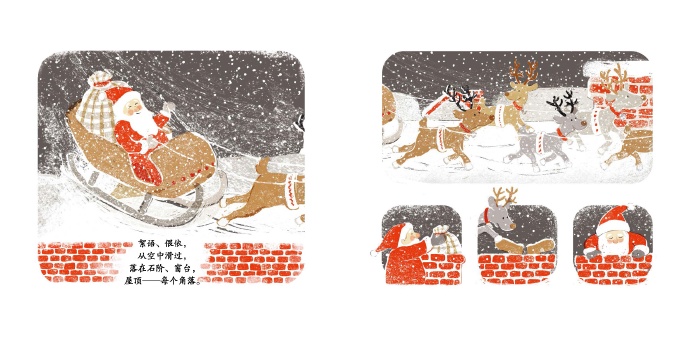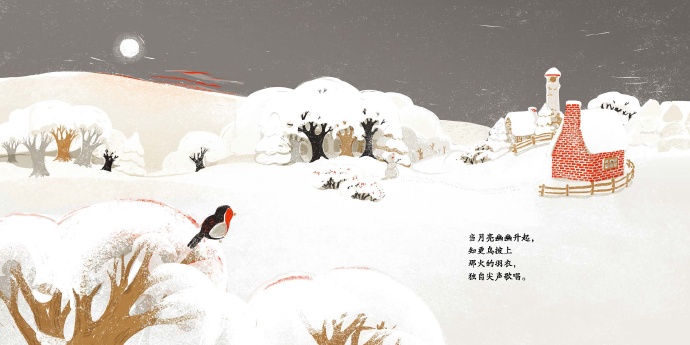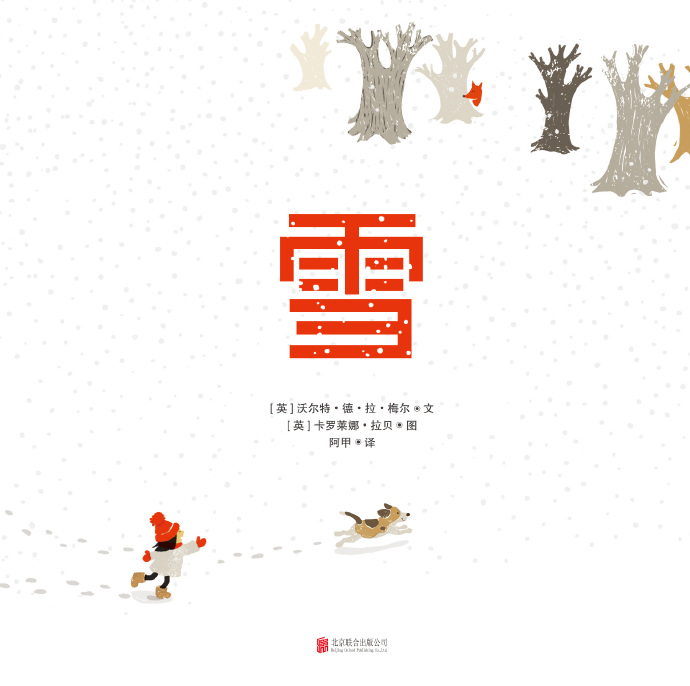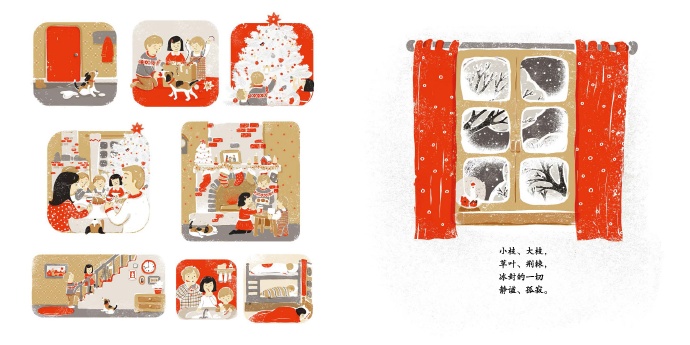Translator Walter
This little poem by de la Mer, “Snow”, was a very interesting learning experience for me.
To be precise, it is the translation of the picture book adapted from this poem.
.
When the editor first asked me to write the article, I was first impressed by the pictures — they were very beautiful, and
A rare purity! Perhaps this is what a poem titled “Snow” should look like.
The pictures are also very childlike, with snowmen, snowball fights, and Santa Claus falling from the sky. It is quite fun.
It must be a joyous thing to translate this beloved little book, so I am very happy.
Xing agreed.

But who is the author De La Mare?
This English poet and novelist is also translated as “De La Mare”, probably considering the fact that “D
e la
The surname “M are” comes from France, but here we still follow the English
Wikipedia’s phonetic translation is de la Mer. He was born in 1873 and was active in 1910.
After the Tang Dynasty, his style is quite similar to that of the Lake Poets Wordsworth and Coleridge, but in terms of surrealism
The imagery of the poem is unique, and William Blake is highly respected. However, in the general history of British poetry
He does not have a prominent position, so ordinary poetry lovers may not know him. In fact, he is mainly
Active in the world of children’s literature.
In 1
The book “Happy Years” published in 1953 is regarded as a benchmark in the field of English children’s literature and children’s libraries.
In the novel, de la Mer is highly praised and appears at least 33 times in the whole book, not only because he created
His children’s poetry is a model of good poetry, and also because of his standards for selecting poetry collections and judging excellent children’s works.
De La Mer firmly believed that only the best works could truly move children.
He also insisted that “there should be no age limit in creation, and we should fully trust children’s instinctive response to beauty and wonder.”
” Lillian H. Smith, author of “Glee Years”, praised: “De La Mare’s couplets
The effect of the book on children is that it awakens their hearts, their imaginations, and a certain beauty which is invisible to the eyes—a beauty which must be awakened.
The beauty that can only be discovered by awakening all the senses.” Li Lian’s mentor, the New York Public Library Children’s Book Department
Anne Carroll Moore, the head of the American children’s book industry, is also very fond of de la Mare.
In her collection of children’s book reviews, “Three Owls,” published in 1929, there is a special article
“De la Mer’s Birthday” is as important as “Andersen’s Birthday”
.
De la Mer’s poem “Snow” was included in the 1922 edition of “The
D own – A down – D erry
: A
B ook o
f F airy
Poems), as the name suggests, the poems in this collection all have a
Fairy tale fun. At the beginning of the translation, I decided to put aside the pictures and translate the poem independently, but after reading it over and over again
I felt like I had stepped into another world—a world completely different from the one created by the picture book.
The mood is more quiet and mysterious, without a trace of joy, and… Wait a minute, how about the original poem?
Four extra lines?
After the picture book text, it says: “A n
d from
her dark
– gnarled
/ Yew – tr
ee lair
/ F lit
s she
who ha
d been
/ I
hiding
” There .” Tentative translation: ” It has been lurking for a long time.
she /
From the gnarled yew tree
/ That dark nest
hole /
Who is this “she” here? It’s definitely not the
The robin in the feathers of fire, because the original poem uses “he” there. Why is the robin shrieking?
After singing, will “she” spread her wings and fly away? For some reason, I smell a hint of “death” in this image.
Of course, it can also be interpreted as permanent peace, after this last moment of movement,
Into a deep silence.
But as Coleridge said, “When poetry is understood only in general and not in detail,
When it is fully understood, the joy it brings is far greater.” This is true for adults, but especially for children.
De la Mer even believes that this is the reason why poetry attracts children, and of course he also believes that the sound of poetry
The musicality is more attractive to children than the meaning itself. So next, I no longer dwell on “the most important thing about this poem”.
What do you want to convey at the beginning? The focus is mainly on how to make this poem resonate.
It sounds better, and it has a bit of a snowy feeling. The original poem has about 4 syllables per sentence, short
I also try to keep the length of each sentence to 4 to 6 words.
The labiodental consonants are very light, creating a soft feeling of snowflakes. It is not easy to find a corresponding method in Chinese.
, we can only look for rhymes and words that have a lighter pronunciation, such as “小枝、大枝”,
/ blades of grass, thorns,
/ Everything Frozen
/ Quiet and lonely.
Whether it works in the end is left to the readers to judge.
However, I also
I couldn’t resist my curiosity and still wanted to understand why the picture book text was treated like that, so I finally contacted
I think the illustrator, Carolina Rabe, might have an answer for me. Her answer was very interesting. She said
The editor of this book gave her this version, without mentioning (or knowing) that there was another
The editor asked her to create a warm and fun Christmas picture book, so she added
I added many details of my own imagination, almost creating another story. — — Indeed, if you read carefully,
Readers may notice that the story in the picture book is strung together by the robin, from the flying bird on the front endpaper to the
The flying out of the end pages leaves people with a lot of imagination.

I was not entirely surprised by Rabe’s response.
To some extent, this is to be expected. She is a very young artist, born and raised in Romania.
She was immersed in Romanian classic children’s literature since childhood, and English is not her native language.
After obtaining a master’s degree in children’s illustration from Cambridge School of Art in the UK, I was invited by the editor to draw for Snow.
Illustration, this is her debut work! The “cunning” editor did not let her delve into the text of the original poem, but
She was asked to express the joy and warmth of Christmas Eve as much as possible, and she completed the task almost perfectly.
This short poem by La Mare, published in 1922, is accompanied by a painting by a young artist in 2014.
Years of creation, collaboration across time and space, words and pictures each with their own stories and strengths, ultimately forming this
A peculiar picture book. This is probably what Perry Nordman (author of The Joy of Children’s Literature, Canada)
What the Canadian children’s literature theorist calls the “third story” composed of text and pictures
.
Ajia …
Written in Beijing on February 27, 2016


